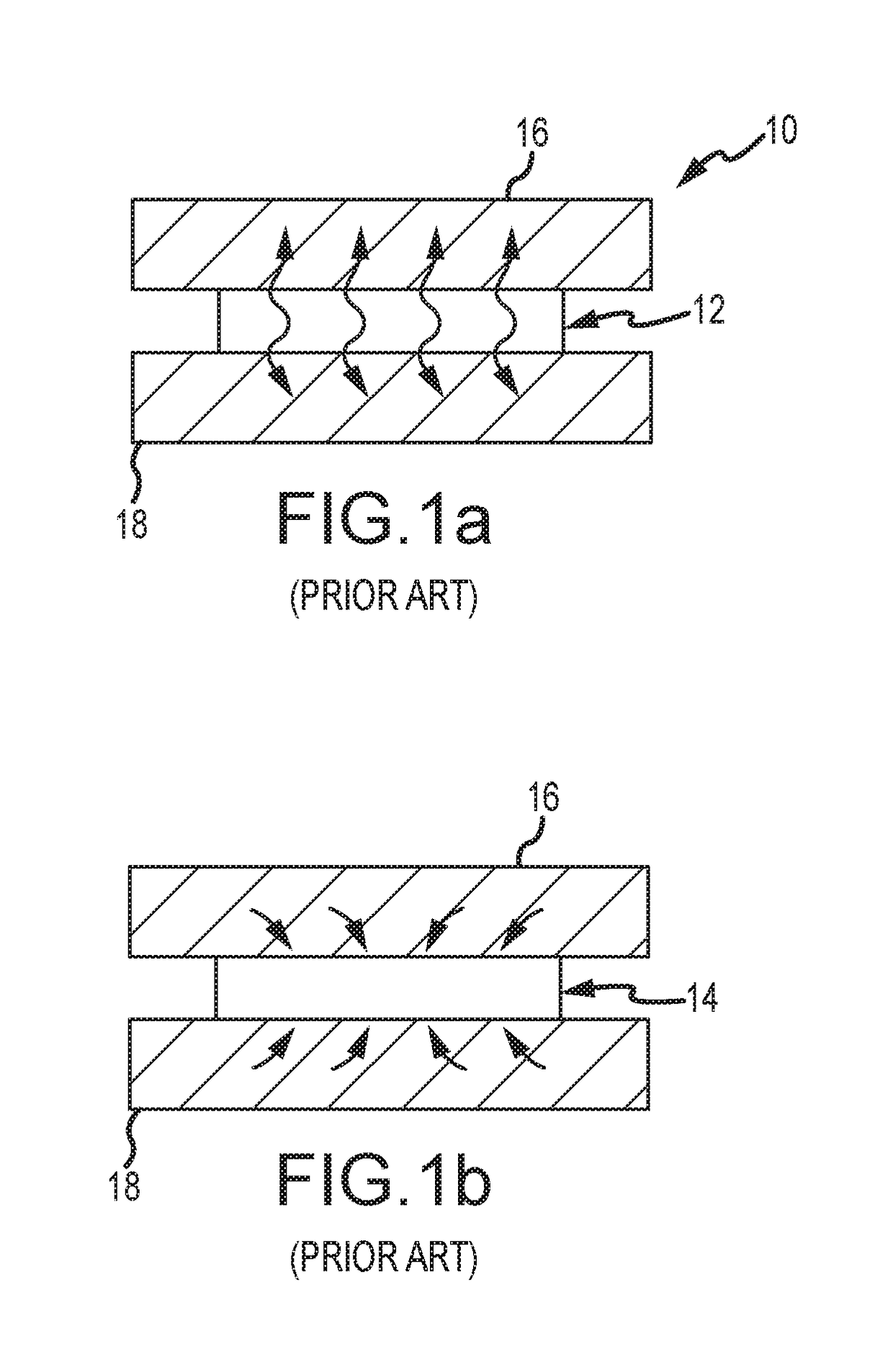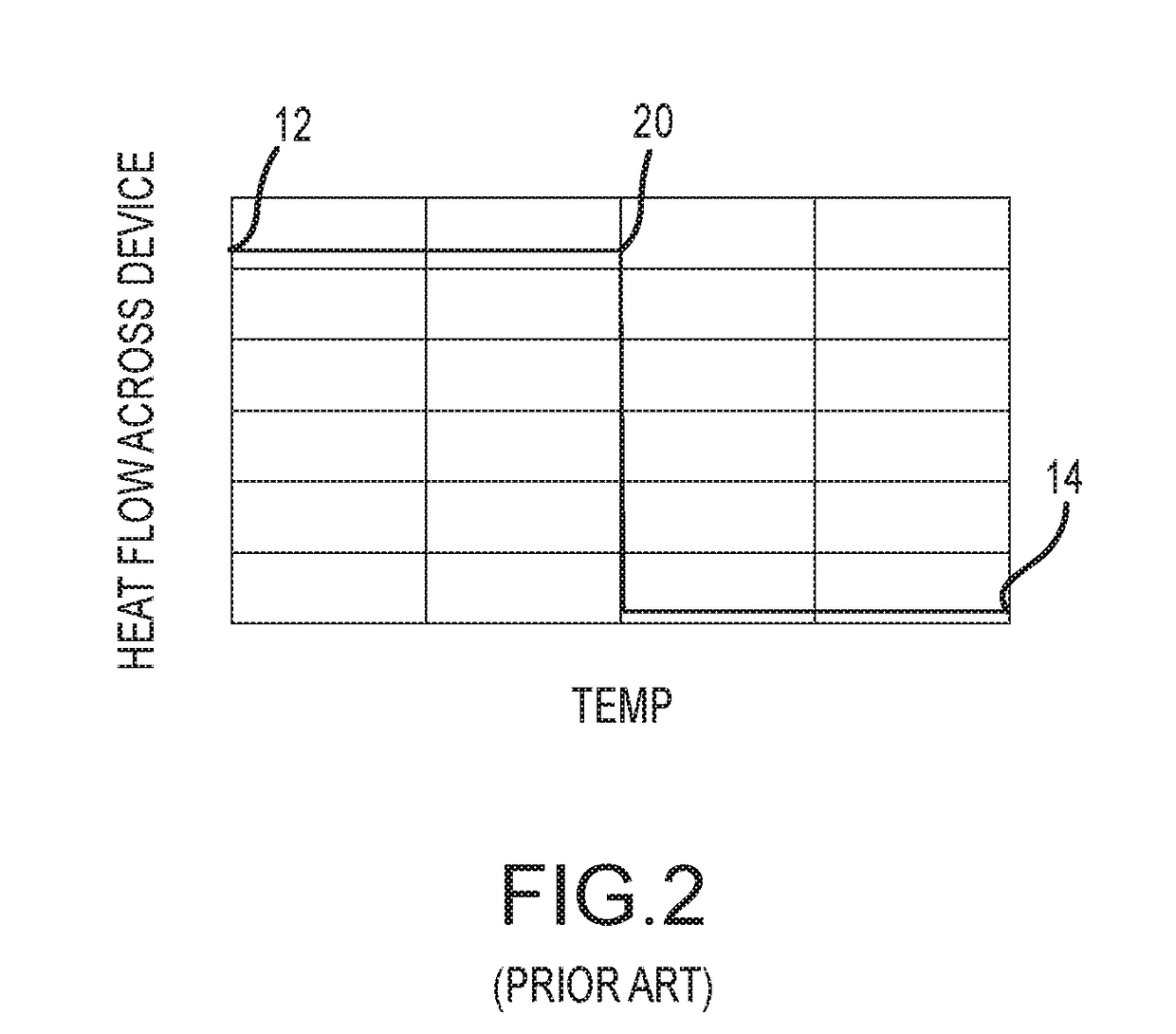Wedge-based heat switch using temperature activated phase transition material
a phase transition material and heat switch technology, applied in the field of heat switch, can solve the problems of reducing the spring energy available to generate contact pressure at the thermal interface, limited use of this approach, and large mass of the housing to be translated
- Summary
- Abstract
- Description
- Claims
- Application Information
AI Technical Summary
Benefits of technology
Problems solved by technology
Method used
Image
Examples
Embodiment Construction
[0026]The present invention provides a passive temperature activated heat switch that switches rapidly between a thermally conductive state and a thermally insulating state, vice-versa or both. A wedge-based heat switch includes an energy storage element (e.g., a spring or pressurized cavity) configured to store (and release) energy via compression or expansion of the element along the shaft and a temperature activated phase transition material. A temperature stimulus activates the phase transition material to release the stored energy and move wedge segments axially along a shaft to expand or contract and move radially to switch between the thermally conducting and thermally insulating states. The wedge-based heat switch may be configured as a unidirectional switch, either conductive-to-insulating or insulating-to-conductive or a bi-directional switch. The specific design of the wedge-based heat switch is informed by such factors as unidirectional or bi-directional, required preloa...
PUM
 Login to View More
Login to View More Abstract
Description
Claims
Application Information
 Login to View More
Login to View More - R&D
- Intellectual Property
- Life Sciences
- Materials
- Tech Scout
- Unparalleled Data Quality
- Higher Quality Content
- 60% Fewer Hallucinations
Browse by: Latest US Patents, China's latest patents, Technical Efficacy Thesaurus, Application Domain, Technology Topic, Popular Technical Reports.
© 2025 PatSnap. All rights reserved.Legal|Privacy policy|Modern Slavery Act Transparency Statement|Sitemap|About US| Contact US: help@patsnap.com



